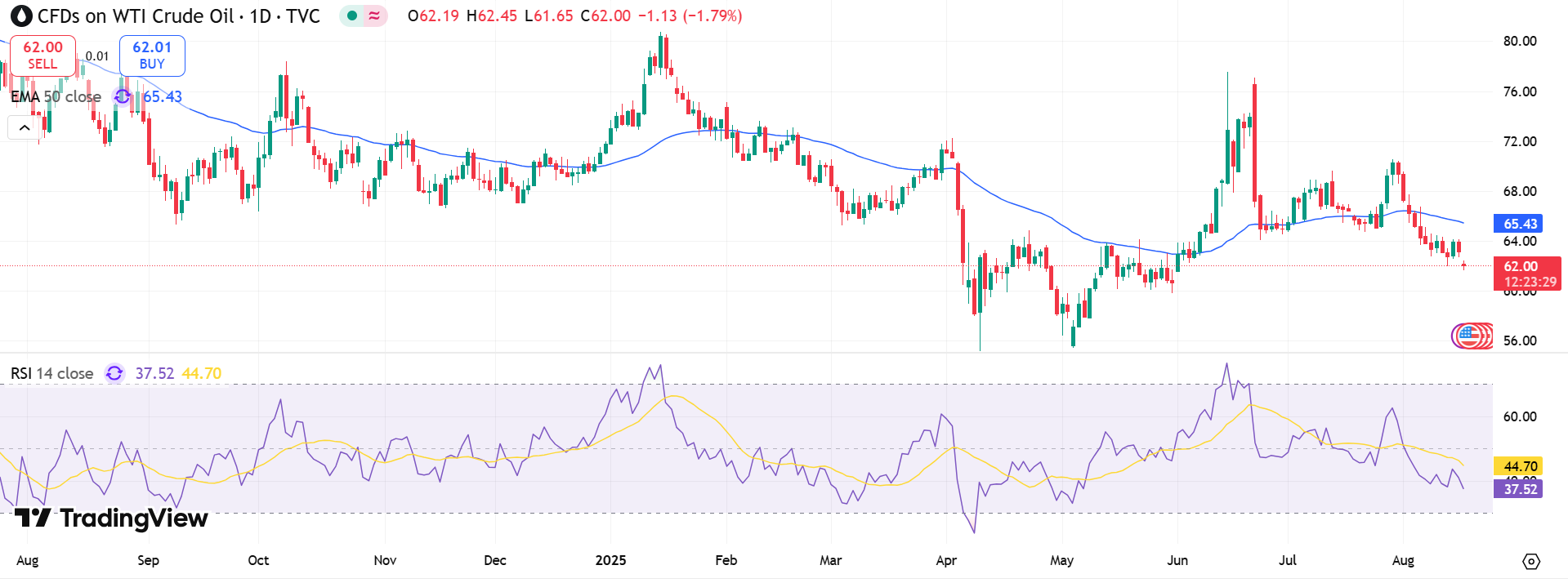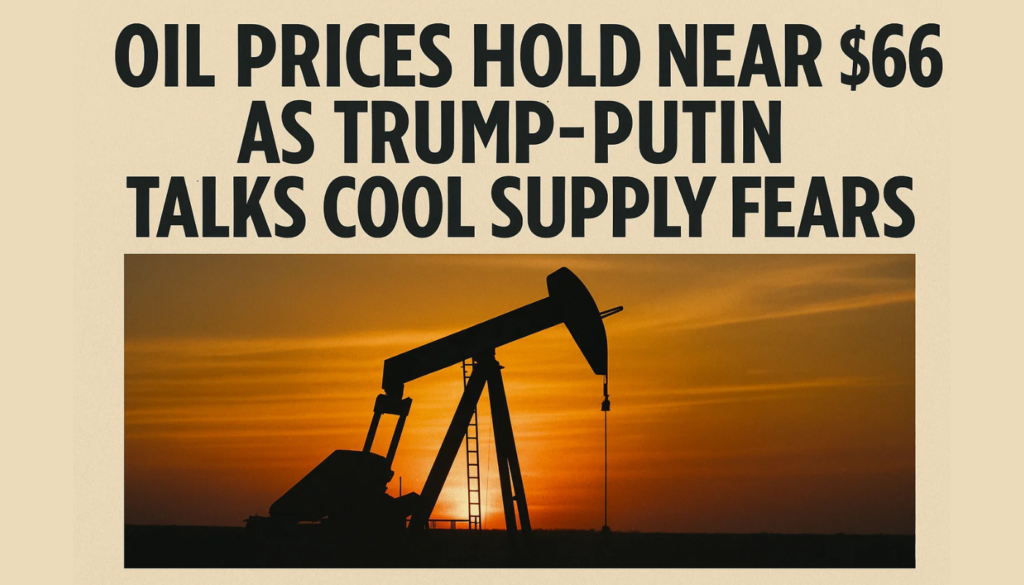Oil prices settled into a narrow band on Monday after an early dip, reflecting investors’ relief that Washington did not impose new measures on Russian energy exports.
- Brent crude fell 0.09% to $65.79 a barrel.
- West Texas Intermediate (WTI) edged 0.03% higher to $62.82.
The muted trading followed a Friday meeting between U.S. President Donald Trump and Russian President Vladimir Putin in Alaska. Rather than pressing for immediate curbs on Moscow’s crude shipments, Trump signaled a preference for accelerating peace talks over escalating sanctions.
Trump is expected to meet Ukrainian President Volodymyr Zelenskiy and European leaders on Monday to explore a deal that could end Europe’s bloodiest conflict in eight decades.
Russian Supply Risks in Focus
Energy markets had braced for potential secondary tariffs on countries importing Russian oil, especially China and India, the top buyers. But Trump indicated such steps may not be considered for another “two or three weeks.” That pause reduced fears of sudden supply shocks.
Independent analyst Gaurav Sharma noted that the market was already pricing in a “non-outcome,” with sentiment leaning bearish if Russian barrels re-enter the global pool.
RBC Capital’s Helima Croft emphasized that Trump’s decision to hold back on targeting China helps preserve the status quo, though she cautioned that Moscow is unlikely to soften its territorial demands.
Key supply insights:
- China remains the world’s largest crude importer and Russia’s top energy customer.
- India ranks as the second-largest buyer of Russian oil.
- A peace deal could bring more Russian barrels into circulation, pressuring prices lower.
Investors Eye Fed’s Next Move
Beyond geopolitics, traders are closely watching the Federal Reserve’s policy direction. Chair Jerome Powell is scheduled to speak at the annual Jackson Hole symposium this week, where hints about future interest rate cuts could set the tone for broader markets.

IG market analyst Tony Sycamore said Powell will likely remain “noncommittal and data-dependent,” especially with key payroll and inflation data due before the September 17 Federal Open Market Committee meeting.
The dual lens of diplomacy and monetary policy underscores the fragility of crude markets: a stalled Ukraine war could cap oil prices, while Fed easing might lift broader risk appetite.


